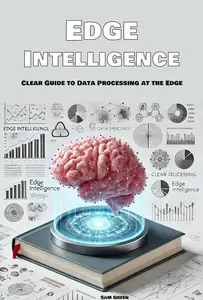
Free Download Edge Intelligence: Clear Guide to Data Processing at the Edge by Sam Green
English | December 14, 2024 | ISBN: N/A | ASIN: B0DQJ7FV18 | 100 pages | EPUB | 1.27 Mb
Edge computing is a distributed computing paradigm that brings computation and data storage closer to the location where it is needed, rather than relying solely on centralized cloud servers. In traditional cloud computing, data is sent from devices to a central server for processing, which can introduce latency and bandwidth challenges. Edge computing addresses these issues by processing data locally, at the "edge" of the network, typically near the source of data generation, such as IoT devices, sensors, or mobile devices.
The key benefit of edge computing is its ability to reduce latency, allowing real-time or near-real-time processing of data. This is crucial for applications that require immediate responses, such as autonomous vehicles, industrial automation, and smart city infrastructure. By analyzing data locally, edge computing not only speeds up decision-making but also reduces the amount of data that needs to be transmitted to the cloud, minimizing bandwidth usage and lowering network congestion.
In addition to performance improvements, edge computing also enhances security and privacy. Since sensitive data can be processed locally, there is less risk of exposing it during transmission over the internet. This is particularly important in industries like healthcare and finance, where data privacy is a top priority. Overall, edge computing empowers systems to be more efficient, responsive, and secure by decentralizing data processing and enabling smarter decision-making at the point of generation.
Code:
Bitte
Anmelden
oder
Registrieren
um Code Inhalt zu sehen!